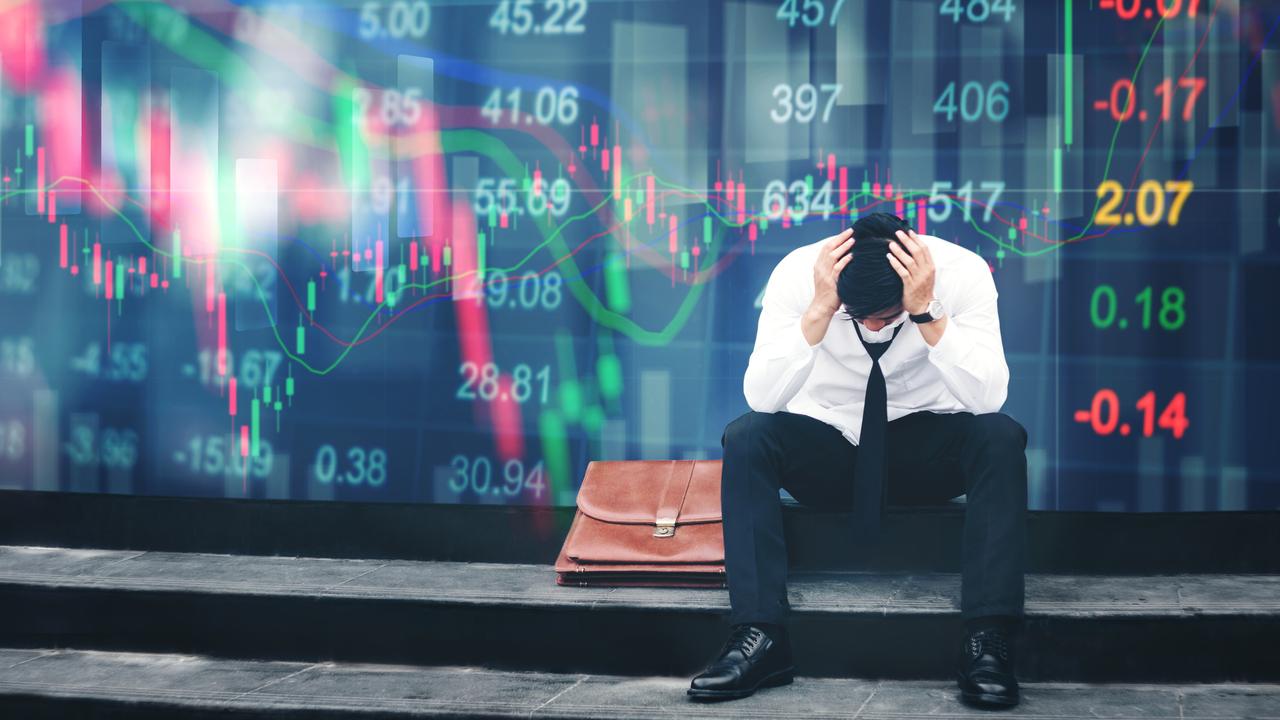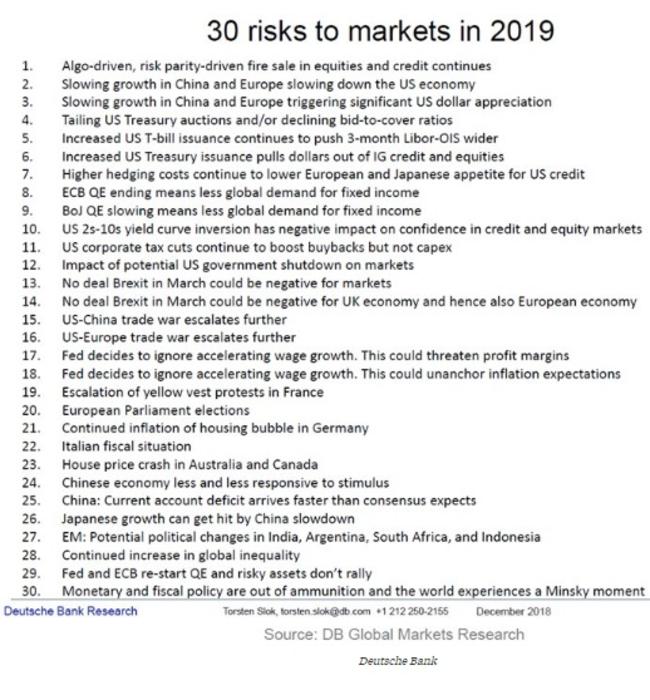Expert reveals most dangerous threats to the global economy in 2019
A potential “house price crash” in Australia is among the biggest threats to global markets. But just how worried should we really be?

One of the world’s leading economists has issued a grim warning of the top hazards threatening global markets in 2019.
And one of the top 30 factors is a potential “house price crash” in both Canada — and Down Under.
Produced by multinational investment bank and financial services company Deutsche Bank, the list includes chief international economist Torsten Slok’s predictions of the risks which will drive financial markets in the new year.
• Kid’s ‘inexcusable’ act on plane slammed
• Surprising suburbs we can’t get enough of
• ‘Just full of it’: TV host roasts Trump
It includes a range of frightening factors, from political instability in countries such as India, Argentina, South Africa and Indonesia, the protests in France, the US-China and US-Europe trade wars, Brexit and the US government shutdown.
Other risks include slowing growth in China and Europe, European parliament elections, a German housing bubble and a market “fire sale” led by trading algorithms.
In an interview with MarketWatch, Mr Slok said the world was now in an “unusually difficult situation” because the factors on the list had little in common.

“The fact that there are so many topics on this list, and that they are so diverse, tells you something important about the market,” he told the publication.
“I have a PhD in economics. I am the chief international economist at Deutsche Bank Securities, and I spend all day thinking about the explanations of why the stock market goes up and down.
“Usually there’s a good explanation, be it from earnings revisions, new economic data or surveys of sentiment.
“The very unique thing about markets since October is that we have on all three fronts seen little change whatsoever.”
Mr Slok said we should be wary when the stock market moved for no apparent reason.
“If you look at all these data, it is just really strong, and it can’t justify the decline we’ve seen in the stock market,” he said.
“If you can’t explain why the market is moving, you should be suspicious of the moves the market makes.”
Mr Slok’s predictions come after a volatile 2018 which saw a number of significant stock market rises and plunges.

And it also comes amid a volatile year for the Australian housing market, with house prices in Sydney and Melbourne falling dramatically.
In early December, CoreLogic data revealed Sydney house prices fell 1.4 per cent in November, double the national average, bringing the annual decline to 8.1 per cent.
CoreLogic believes the total peak-to-trough decline will be 15 per cent — which means the downturn is on track to eclipse the previous record set during the last recession between 1989 and 1991 when prices fell 9.6 per cent, the worst since CoreLogic began collecting figures in 1980.
And in November, CoreLogic figures also showed median house prices in Sydney had fallen by $72,041 in a year, while Melbourne had lost $45,376 in the same period.
And in September, Dr John Llewellyn, the former chief economist of failed US investment bank Lehman Brothers, made the alarming prediction that a of worrying conditions known as “doom loops” could soon trigger a fresh global financial crisis.
Dr Llewellyn claimed nations were racking up debt which banks may not be able to recover, and that a combination of greed, debt at an “all time high”, “irrational exuberance” and low interest rates were working together to push the world to the brink of financial crisis.
His claims were echoed by Aussie economist John Adams, who warned of a looming global crash based on record levels of public and private debt, ultra-low interest rates, excessive public spending and a massive housing bubble, among other indicators.
Continue the conversation @carey_alexis | alexis.carey@news.com.au




